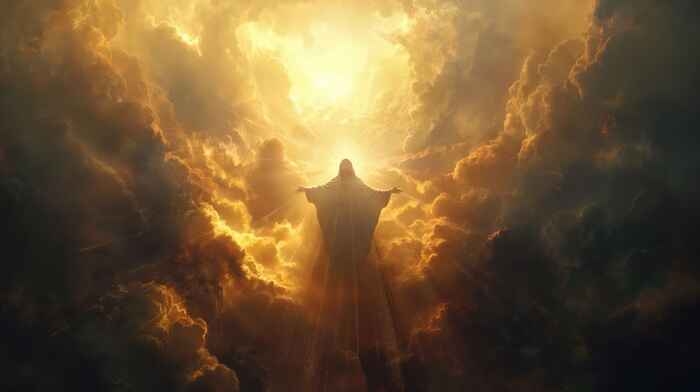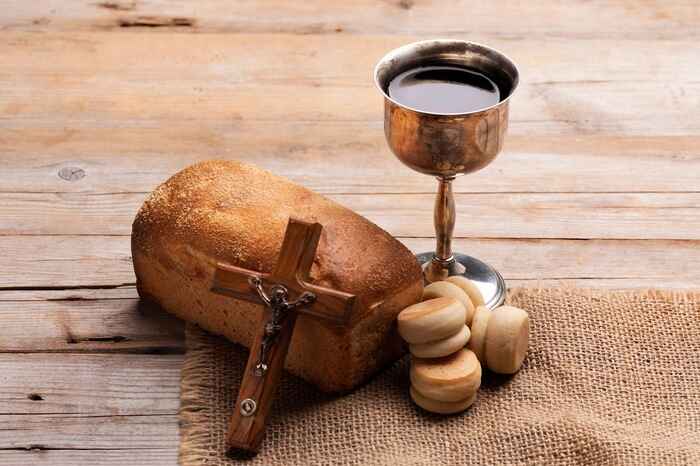What Is the Lord’s Prayer?

The Lord’s Prayer, often called the Model Prayer, is found in Matthew 6:9–13 and also in Luke 11:2–4. This moment in Scripture, where Jesus teaches His followers how to pray, is not just about reciting words; it’s about understanding the heart behind them.
It’s sometimes referred to as the "your kingdom come prayer", based on one of its most powerful lines: “Your kingdom come, Your will be done.”
This prayer is not about choosing between a written prayer vs a spoken prayer, it’s about praying with sincerity. Whether you write the Lord’s Prayer down to reflect on it or whisper it in moments of quiet, what matters is that your heart is in it.
Jesus even warns us not to pray with empty repetition or to rely on fancy words. In prayer, what matters is truth, our truth before God.
Many people search for the words to the Lord’s Prayer, hoping to memorize them or teach them to their children. And while it’s good to know the words, it’s even more important to grasp their meaning. This prayer teaches us how to re-center our lives, how to let go of control, surrender our needs, forgive, and ask for guidance. It gives us the foundation to speak with God, not just recite to Him.
The History Behind The Lord’s Prayer
The Lord’s Prayer is one of the most well-known and frequently recited passages in all of Christianity. According to tradition, Jesus taught this prayer to His disciples as a model for how to approach God.
It appears in two distinct forms in the New Testament: a shorter version in Luke 11:2–4 and a longer one in Matthew 6:9–13, where it forms part of the Sermon on the Mount.
While the Gospel of Luke presents it in response to a request from the disciples—“Lord, teach us to pray”—Matthew's account offers the prayer as part of Jesus’ broader teaching on private, sincere devotion.
The Matthean version is the one most widely used in Christian worship today. It includes seven petitions that move from honoring God to asking for daily provision, forgiveness, and protection.
The structure of the prayer reflects deep roots in Jewish prayer traditions. Like the Amidah or the Kaddish, it begins with praise and ends with petitions, expressing both reverence and dependence on God. The phrase “Our Father” echoes language found in the Hebrew Scriptures, emphasizing both intimacy and divine authority.
Over the centuries, the Lord’s Prayer has been incorporated into nearly all Christian denominations and liturgies. It is recited during the Eucharist, included in the rosary in Roman Catholic practice, and used in the daily office of the Anglican tradition.
A doxology—“For thine is the kingdom, and the power, and the glory, forever”—is frequently added in Eastern and Protestant traditions. Though not found in the earliest biblical manuscripts of Matthew, this phrase was likely inspired by early Christian writings such as the Didachē and entered Protestant liturgy after the Reformation. It was officially added to the Catholic Mass following the Second Vatican Council as a gesture of unity.
Get Closer to God Today
4.9
Average Rating
|Over 5 Million Downloads
Verse-by-Verse Analysis of the Prayer

After this manner therefore pray ye: Our Father which art in heaven, Hallowed be thy name. Thy kingdom come. Thy will be done in earth, as it is in heaven. Give us this day our daily bread. And forgive us our debts, as we forgive our debtors. And lead us not into temptation, but deliver us from evil: For thine is the kingdom, and the power, and the glory, for ever. Amen. — Matthew 6:9-13, KJV
“Our Father which art in heaven, Hallowed be thy name”
The prayer begins by turning our eyes upward. When Jesus says “Hallowed be thy name,” He invites us to start with reverence. Hallowed means holy, sacred, set apart. This is not just a formality; it is a declaration of God's uniqueness. We are not speaking to an ordinary being. We are speaking to the Almighty.
This line centers us. It calls us to acknowledge who God is before we ask for anything. He is our Father, yet He is also the Holy One in heaven. As 1 Samuel 2:2 says, “There is none holy as the Lord.”
If you've ever searched for the words to the prayer in English, understand that this verse sets the tone for the entire prayer: one of honor, humility, and awe.
“Thy kingdom come, Thy will be done in earth, as it is in heaven”
This line is about surrender. When we pray “Thy kingdom come,” we are asking for God's reign to be made visible in our lives and in the world. His kingdom brings peace, truth, and righteousness. We’re also looking ahead to the day when He will make all things new.
The next part, “Thy will be done in earth, as it is in heaven,” is about alignment. We are asking God to help us want what He wants. To live out His will on earth just as the angels obey Him in heaven.
This is the heart of the prayer. It’s a choice to trust God's ways over our own, even when we do not understand them.
“Give us this day our daily bread”
This simple request teaches us to rely on God every day. Not for luxury, not for excess, but for what we need. Bread, in Scripture, is symbolic of sustenance, and in ancient times, it was the foundation of a meal. By asking for daily bread, we express our dependence on God for physical and spiritual nourishment.
Jesus reminds us that “man shall not live by bread alone” (Matthew 4:4), but by God's Word. This request keeps us grounded. It humbles us. And it teaches us to trust Him not just for tomorrow, but for today.
“And forgive us our debts, as we forgive our debtors”
This part brings us face to face with grace. We come to God asking for forgiveness, not because we’ve earned it, but because we need it. Jesus teaches that just as we ask to be forgiven, we must also be ready to forgive others.
This is a mirror. It reflects the state of our hearts. Are we holding on to bitterness? Or are we living as people who understand mercy? The words to pray to God in this line are both freeing and challenging. When we forgive, we release others, but we also release ourselves.
“And lead us not into temptation, but deliver us from evil”
Temptation is something everyone of us faces. When we pray this, we are not suggesting that God causes temptation. Rather, we are asking Him to guide us away from it. We are acknowledging that, left to ourselves, we are vulnerable.
God's Word assures us, “There hath no temptation taken you but such as is common to man… but God is faithful” (1 Corinthians 10:13). He provides a way out. This verse is a cry for discernment, strength, and protection. This line reminds you of just how much we depend on God’s help to stay on the right path.
“For thine is the kingdom, and the power, and the glory, for ever. Amen.”
The prayer closes with a declaration of God's sovereignty. It is His kingdom. It is His power. And it is His glory. This doxology brings everything back to God. We have made our requests, but now we return to praise. We affirm that everything begins and ends with Him.
This line restores our perspective. Whatever we face, whatever we ask, God is still in control. If you've ever looked up the words to the Lord’s Prayer, you may have noticed this ending is sometimes left out in modern translations.
But in the KJV, it beautifully wraps the prayer with worship and certainty. Amen means “so be it.” It is our wholehearted agreement with all that we have prayed.
Other Versions of The Lord’s Prayer
There are several notable versions of the Lord’s Prayer, shaped by denominational preferences, liturgical traditions, and language translations. While the core meaning remains consistent, the wording can vary—sometimes subtly, sometimes significantly—across traditions.
Below are the most common versions:
Catholic Version (Modern English)
Our Father who art in heaven,
Hallowed be thy name.
Thy kingdom come.
Thy will be done on earth as it is in heaven.
Give us this day our daily bread.
And forgive us our trespasses,
As we forgive those who trespass against us.
And lead us not into temptation,
But deliver us from evil. Amen.
This version is used in Roman Catholic Mass and catechesis. Notably, it says “trespasses” instead of “debts.” The doxology (“For thine is the kingdom…”) is not recited by the congregation but included after the embolism by the priest during Mass.
Ecumenical (Contemporary) Version
Our Father in heaven,
Hallowed be your name,
Your kingdom come,
Your will be done, on earth as in heaven.
Give us today our daily bread.
Forgive us our sins
As we forgive those who sin against us.
Save us from the time of trial
And deliver us from evil.
For the kingdom, the power, and the glory are yours,
Now and forever. Amen.
This version is used in modern ecumenical settings, including the World Council of Churches. It avoids archaic language and emphasizes accessibility across denominations.
Luke’s Version (Luke 11:2–4)
Father,
Hallowed be thy name.
Thy kingdom come.
Give us day by day our daily bread.
And forgive us our sins;
For we also forgive every one that is indebted to us.
And lead us not into temptation; but deliver us from evil.
This shorter version appears in the Gospel of Luke and is often seen as a more informal or direct version taught in response to the disciples' request.
Use Bible Chat to Learn More Prayers
The Bible Chat app is an incredible resource for discovering the deeper layers of God’s teachings. Whether you want to understand a verse, discover a new prayer, or simply have some time to reflect, this is the Bible app for you.
With Bible Chat, you can even learn in an interactive way, thanks to its AI priest technology. Download it from the App Store or Google Play and always be one click away from deepening your faith.
Get Closer to God Today
4.9
Average Rating
|Over 5 Million Downloads
Conclusion
The Lord’s Prayer is a model of how to pray given by God himself in the Bible. Now that you know its meaning, you can say it with honesty, and not just as a string of words you learned by heart. Prayer must always be a reflection of our faith and love for God.
Resources
- What is the Lord’s prayer and should we pray it?, https://www.gotquestions.org/Lords-prayer.html, accessed on 13.05.2025;
- The Lord’s Prayer Explained (Line By Line), https://harvest.org/resources/gregs-blog/post/the-lords-prayer-explained/, accessed on 13.05.2025;
- Lord’s Prayer, https://www.britannica.com/topic/Lords-Prayer, accessed on 13.05.2025.
Source of the Images: Freepick.com










